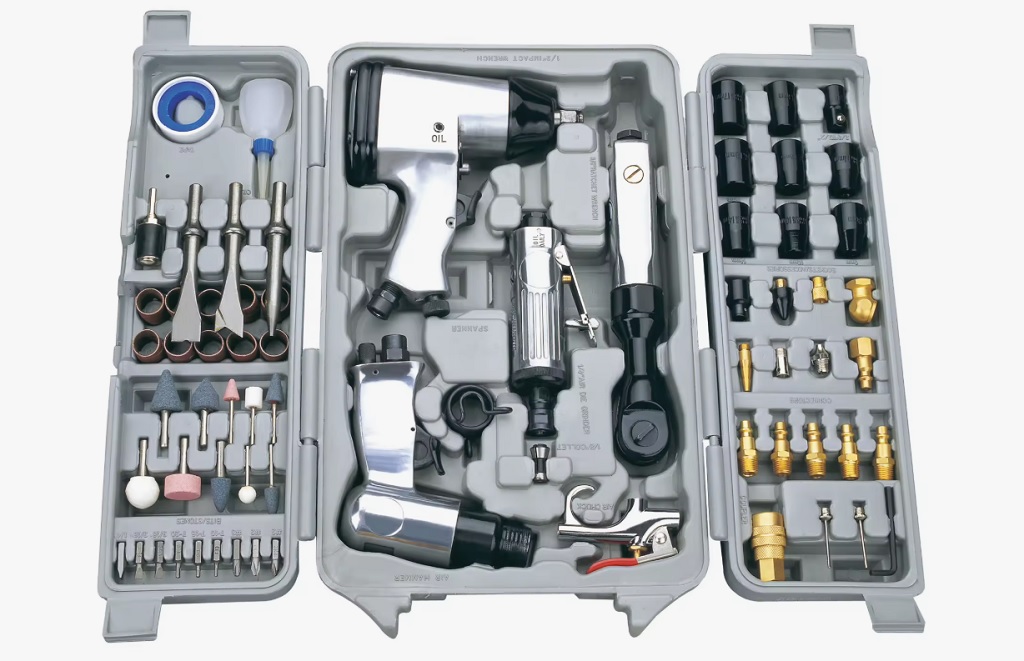
As the wheels of progress continue to turn, have you ever stopped to ponder the 'how?' What are the tools that make the industrial sector tick? Beyond the ubiquitous hammers and screwdrivers, there's a set of instruments that pack a punch, especially in the industrial sector - pneumatic tools. Unlike their hand-held counterparts, pneumatic tools use compressed air or gas to generate a force, powering machinery and equipment across numerous industries. So, why are they so important in the industrial sector? Are they indispensable or are there alternatives? Let's explore these questions and more.
The industrial sector is a vast and complex system that involves a multitude of tools, from the humble screwdriver to the mighty forklift, each having its unique role. But few serve as crucial and diverse roles as pneumatic tools. Blending strength, speed, and safety with ease of use, pneumatic tools are integral to the industry's efficiency and progress. Are they then the unsung heroes of the industrial sector? In this blogpost, we unpack the myriad ways in which pneumatic tools bolster industrial operations, their pros and cons, and the key insights you need to understand their true value.
This article guide offers an all-inclusive, accessible insight into the world of pneumatic tools in the industrial sector. Whether you're an industry insider, a curious enthusiast, or a novice looking for informed, engaging content, you've come to just the right place!
Unpacking Pneumatic Tools
So, what are pneumatic tools, and why do they matter? They are powered by the force of compressed air or gas, which is converted into mechanical energy. This energy is then used to accomplish tasks like drilling, cutting, sanding, grinding, and painting. As these tasks are integral to numerous industries, pneumatic tools are incredibly adaptable, offering power and precision to users.
Why Pneumatic?
Given the wide variety of power tools available, you might wonder why pneumatic tools a preferred option within the industrial sector. A significant reason is their power-to-weight ratio; they offer substantial power while being relatively light, making them an excellent choice for tasks requiring hefty outputs.
The Power Behind The Punch
Another reason why pneumatic tools are hailed as the powerhouse of the industrial sector is their strength. Since they run on compressed air, they generate a surprisingly robust force, accelerating tasks that would otherwise be too laborious or time-consuming.
Safety And Feasibility
Alongside power, pneumatic tools also deliver on counts of safety and feasibility. They don’t generate sparks, making them safe to use in flammable environments. Their streamlined, lightweight design and lack of electrical components make managing, maintaining, and repairing these tools easier and less costly.
The Downsides
No tool is perfect, and pneumatic tools aren’t an exception. Their reliance on an air compressor can be a limitation, tying them down to a specific area, thereby reducing mobility. They also generate noise and vibration, which could be a concern in specific industrial settings.
Future Trends
The pneumatic tools market is evolving along with the changing needs of the industrial sector. With the advent of technologies such as IoT, AI, predictive maintenance, the future of these tools is gleaming with possibilities.
Conclusion
As we examined the subject, we understood that pneumatic tools' importance in the industrial sector is undeniably due to their power, adaptability, safety, and cost-effectiveness. While they do have their limitations, they remain a staple for most industries, an endorsement of their intrinsic value.
The ever-evolving industry continues to develop tools responsive to emerging challenges and changing dynamics, yet the role of pneumatic tools remains pivotal. They are and will continue to be instrumental, carrying the unseen power that drives the industrial sector forward.

0 comments :
Post a Comment
Note: Only a member of this blog may post a comment.